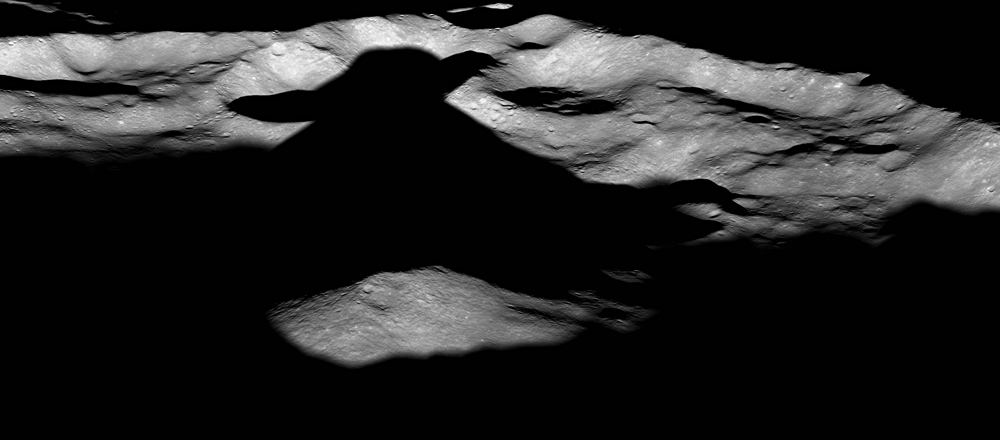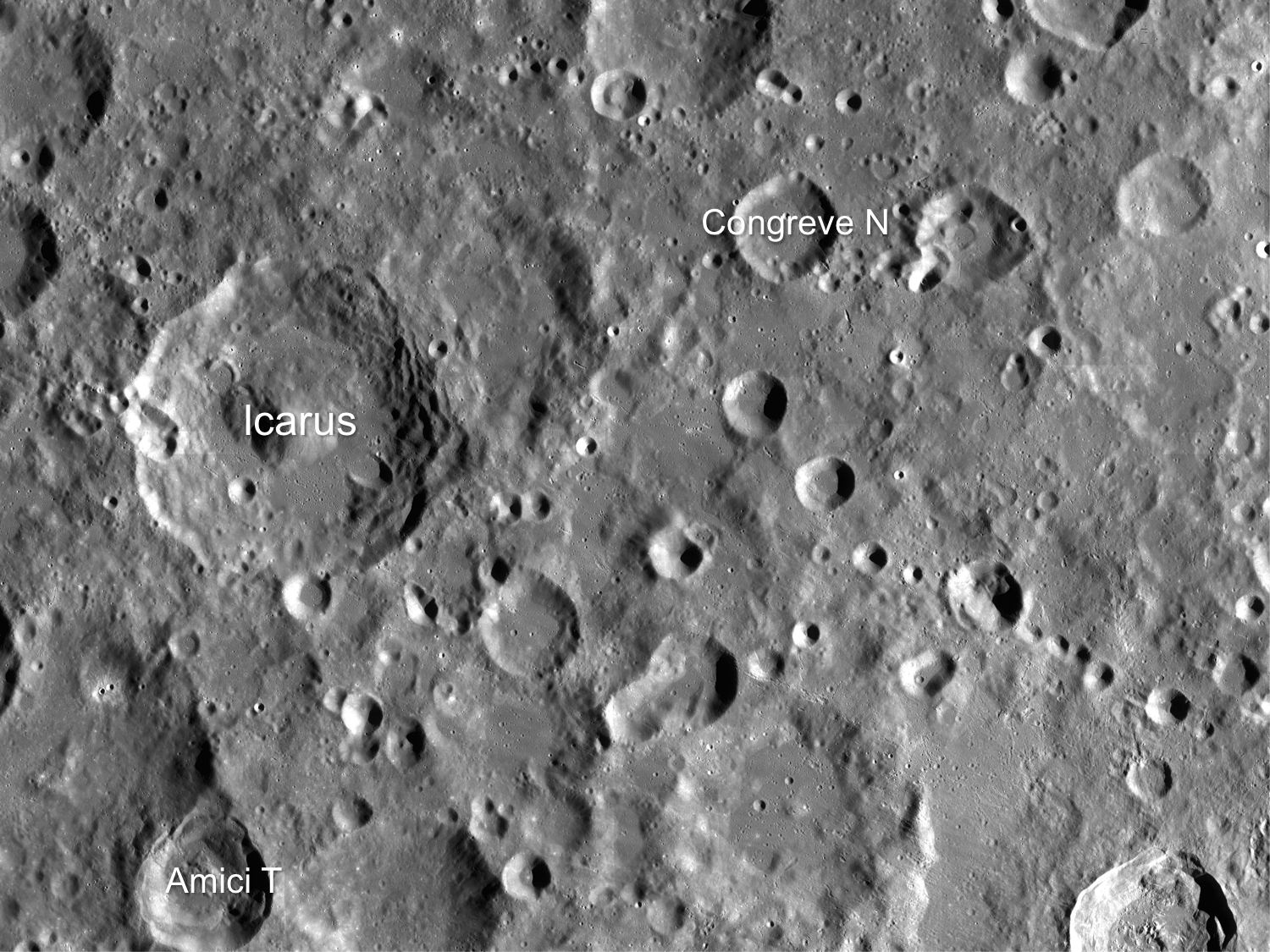
Icarus crater is one of a kind on the Moon; its central peak rises higher than about half its rim. Most central peaks rise only about halfway to the crater rim. Icarus' large, rounded central peak resembles that of Alpetragius on the eastern limb of Mare Nubium. The disproportionate size of the central peak may be because both Icarus and Alpetragius are close in diameter to the transition between central peaks and peak rings.
Icarus is located just west of Korolev crater on the lunar farside. Like the floor of Korolev, the floor of Icarus is covered with relatively smooth light plains material that can be seen outside the crater as well, filling not only crater floors but also the surface between craters in the highlands (See WAC context image below). These light plains were deposited during the formation of the Orientale basin, which is located over 1500 km away! The specific mechanism by which the light plains were emplaced is still under investigation, but the plains are likely made of ejecta produced during the formation of the Orientale basin.
See the full size NAC oblique below!
Related Posts:
Published by H. Meyer on 20 February 2014

